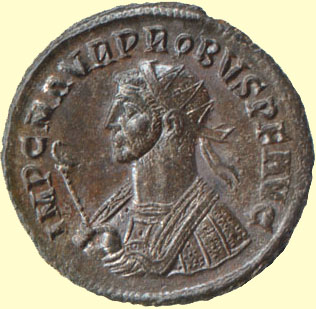
Collegiality:
Collegiality is idea that every office is held by at least two men, this happens in every part of the Executive Branch, with the exception of dictatorship. All members of a college were of equal rank and could veto acts of other members; higher magistrates could veto acts of lower magistrates.
Annual Term:
With the exception of a dictatorship, whic lasted six months, and a censorship, which lasted eightteen months, each member's term was limited to only one year.
Consul:
There were two consuls, they were the chief of civil and militaristic magistrates.
Praetors:
The praetors consisted of two to eight members. Their main jobs were to (a) command the military, and (b) to administrate the civil law in Rome.
Aediles:
This college consisted of two plebians, the common people. They were in charge of religious festivals, public games, temples, upkeep of city, regulation of marketplaces, grain supply.
Quaestors:
The quaestors consisted of two to forty financial officers and administrative assitants. They were in charge of the State Treasury in Rome
and were known as "second in command."
Tribunes:
This college consisted of two to ten members. They were in charge of protecting the lives and the properties of the plebians. They had power of veto over elections, laws, decisions of the senate, and acts done by all other magistrates (except the dictator).
Censors:
There were two censors. They were elected every five years to collect census, enroll new citizens, and review the roll of the senate. They controlled public morals and supervised the leasing of public contracts. They ranked below the Praetors and above the Aediles.
Dictator:
There was only one dictator and he was appointed by the consul in times of military need. He appointed a Master of Horse to lead the calvary. Their term only lasted six months.
Back to Roman Government
Collegiality is idea that every office is held by at least two men, this happens in every part of the Executive Branch, with the exception of dictatorship. All members of a college were of equal rank and could veto acts of other members; higher magistrates could veto acts of lower magistrates.
Annual Term:
With the exception of a dictatorship, whic lasted six months, and a censorship, which lasted eightteen months, each member's term was limited to only one year.
Consul:
There were two consuls, they were the chief of civil and militaristic magistrates.
Praetors:
The praetors consisted of two to eight members. Their main jobs were to (a) command the military, and (b) to administrate the civil law in Rome.
Aediles:
This college consisted of two plebians, the common people. They were in charge of religious festivals, public games, temples, upkeep of city, regulation of marketplaces, grain supply.
Quaestors:
The quaestors consisted of two to forty financial officers and administrative assitants. They were in charge of the State Treasury in Rome
and were known as "second in command."
Tribunes:
This college consisted of two to ten members. They were in charge of protecting the lives and the properties of the plebians. They had power of veto over elections, laws, decisions of the senate, and acts done by all other magistrates (except the dictator).
Censors:
There were two censors. They were elected every five years to collect census, enroll new citizens, and review the roll of the senate. They controlled public morals and supervised the leasing of public contracts. They ranked below the Praetors and above the Aediles.
Dictator:
There was only one dictator and he was appointed by the consul in times of military need. He appointed a Master of Horse to lead the calvary. Their term only lasted six months.
Back to Roman Government